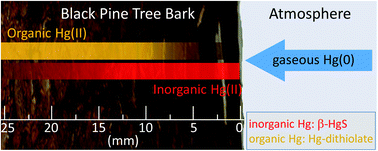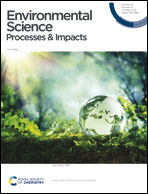Pinus nigra bark from a mercury mining district studied with high resolution XANES spectroscopy†
Abstract
Tree bark near former mercury (Hg) mines and roasting plants is known to have exceptionally high (up to several mg kg−1) Hg concentrations. This study explores the change of Hg speciation with depth (down to 25–30 mm from the outermost surface) in black pine (Pinus nigra) bark by means of high-resolution X-ray absorption near edge structure (HR-XANES) spectroscopy at the Hg LIII-edge. Principal component analysis and linear combination fitting applied to the HR-XANES spectra suggested that in the outermost layer (∼0–2 mm from the surface), roughly 50% of Hg is in the form of nanoparticulate metacinnabar (nano-β-HgS). A progressive increase in Hg-organic species (Hg bound to thiol groups) is found in deeper bark layers, while nano-β-HgS may decrease below the detection limit in the deepest layers. Notably, bark layers did not contain cinnabar (α-HgS), which was found in the nearby soils along with β-HgS (bulk), nor Hg0, which is the main Hg species in the atmosphere surrounding the sampled trees. These observations suggested that nano-β-HgS, at least in part, does not originate from mechanically trapped wind-blown particulates from the surrounding soil, but may be the product of biochemical reactions between gaseous elemental Hg and the bark tissue.

- This article is part of the themed collections: Recent Open Access Articles and Contaminant remediation and fate


 Please wait while we load your content...
Please wait while we load your content...